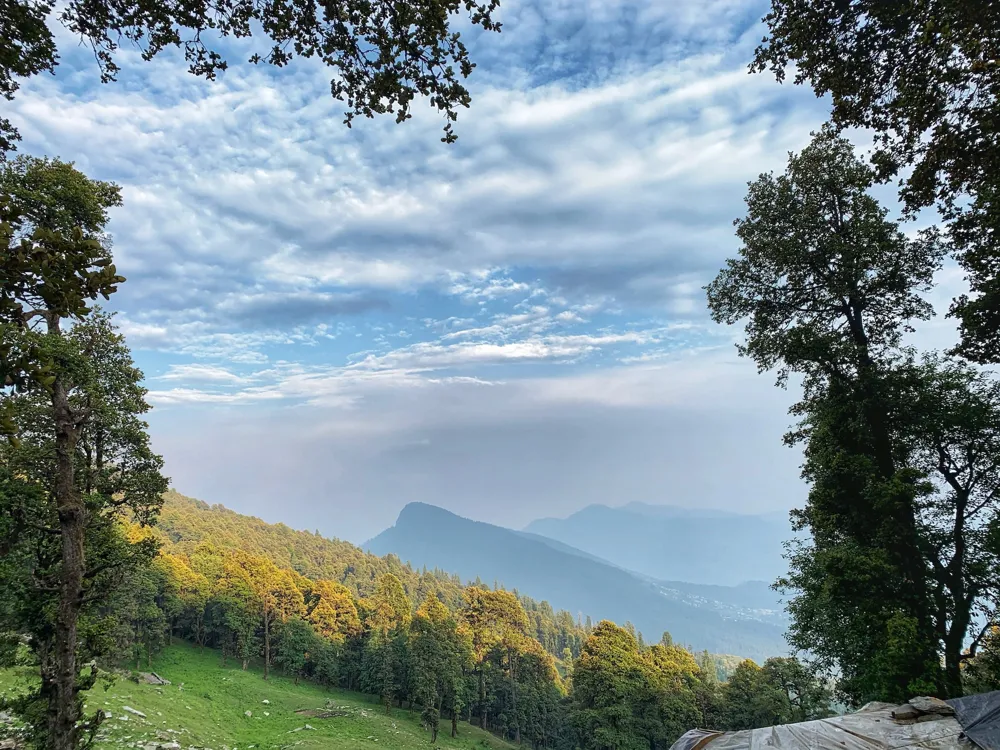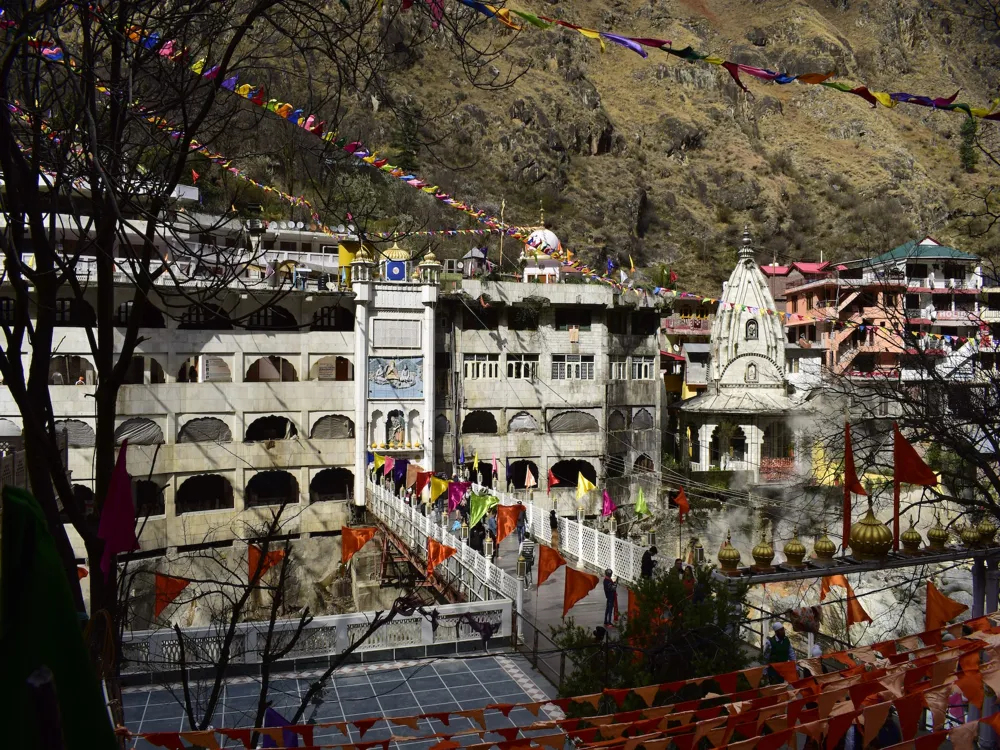Nestled in the serene landscape of Manali, Himachal Pradesh, the Gayatri Temple stands as a splendid example of divine sanctity and architectural marvel. This temple, dedicated to Goddess Gayatri, a form of Goddess Saraswati, is not just a spiritual hub but also a testament to the rich cultural heritage of India. The temple's significance extends beyond religious boundaries, attracting visitors from around the globe who seek peace, spiritual enlightenment, and an insight into India's profound religious practices. The history of Gayatri Temple is as intriguing as its structure. According to legends, the temple dates back several centuries and holds numerous stories within its walls. It is believed that the temple was constructed at a spot where Goddess Gayatri, a manifestation of the universal divine power, meditated. This adds to the temple’s spiritual aura, making it a sought-after destination for pilgrims and tourists alike. The temple's location in Manali, amidst the majestic Himalayas, further elevates its mystical charm and offers a tranquil retreat from the hustle of daily life. Visiting the Gayatri Temple is a journey into the heart of devotional India. The temple not only offers a spiritual experience but also showcases the rich traditions and rituals of Hindu worship. The daily puja, special festivals, and the serene chants that resonate through the temple walls create an ambiance of divine presence. It is here that one can truly experience the harmonious blend of spirituality and nature. The temple’s importance in the local community is profound. It acts as a center for various cultural and religious activities, fostering a sense of unity and spiritual growth among the locals. Moreover, the temple’s role in promoting and preserving the cultural heritage of Himachal Pradesh is invaluable. Artisans, musicians, and spiritual leaders often gather here, making it a melting pot of cultural richness. In conclusion, the Gayatri Temple of Manali is not just a place of worship but a beacon of cultural and spiritual enlightenment. Its historical significance, coupled with its architectural beauty and spiritual ambiance, makes it a must-visit destination for anyone exploring the depths of India’s religious and cultural landscapes. The architecture of Gayatri Temple in Manali is a masterpiece that brilliantly encapsulates the essence of ancient Indian temple design while incorporating unique local elements. It stands as an exemplary model of the intricate craftsmanship and artistic vision that flourished in ancient India. The temple’s architectural style is a harmonious blend of both traditional Himachali and classical Indian temple architecture, making it a visual treat for history and architecture enthusiasts. The temple’s structure is predominantly made of wood and stone, materials that are abundantly available in the region. This choice of materials not only adds to the temple’s aesthetic appeal but also reflects the sustainable practices of ancient Indian architecture. The woodwork, intricately carved with motifs of gods, goddesses, and various mythological scenes, is a testament to the skill and dedication of the local artisans. One of the most striking features of the Gayatri Temple is its shikhara, or tower. The shikhara rises majestically above the sanctum sanctorum, adorned with intricate carvings and statues that narrate tales from Hindu mythology. The tiered structure of the shikhara, with its progressively smaller layers, draws the eye upward, symbolizing the ascent to the divine. This architectural element is a characteristic feature of North Indian temple architecture and adds a sense of grandeur to the temple’s silhouette. The interior of the temple is equally magnificent. The sanctum sanctorum, where the idol of Goddess Gayatri is enshrined, is a space of profound peace and spirituality. The walls and ceilings within the temple are adorned with frescoes and paintings, depicting various episodes from Hindu scriptures. These artworks not only beautify the temple but also serve as a medium for storytelling and spiritual teachings. The temple complex also includes various ancillary structures like halls for prayer and meditation, a community kitchen, and accommodation facilities for pilgrims. These structures, while simpler in design, complement the main temple’s architecture and cater to the functional needs of the temple’s visitors. In conclusion, the architecture of Gayatri Temple is a fascinating blend of divine inspiration, historical significance, and artistic brilliance. It stands as a silent narrator of the rich architectural heritage of India and continues to inspire awe and reverence in all who visit. Visitors should observe and respect the local customs and traditions. This includes dressing modestly, removing shoes before entering the temple, and maintaining silence within the sacred premises. The ideal time to visit the Gayatri Temple is during the summer months, from April to June, when the weather is pleasant. However, those interested in experiencing local festivals may choose to visit during specific religious events. Photography may be restricted in certain areas of the temple. Visitors should look for signage indicating photography rules or ask for permission from temple authorities before taking pictures. Consider hiring a local guide or joining a guided tour to gain a deeper understanding of the temple's history, architecture, and cultural significance. There are various accommodation options near the temple, ranging from budget stays to luxury resorts. Additionally, visitors should use the facilities provided within the temple complex responsibly. Reaching Gayatri Temple in Manali is convenient via various modes of transportation. The nearest airport is Bhuntar Airport, located about 50 kilometers away. From the airport, visitors can hire taxis or use local bus services to reach Manali. For those traveling by train, the nearest railway station is in Joginder Nagar, approximately 135 kilometers from Manali. Regular bus services, taxis, and private cars can be used to travel from the railway station to the temple. For those preferring to drive, Manali is well-connected to major cities like Chandigarh and Delhi via national highways. The drive to Manali is scenic, with breathtaking views of the Himalayas and the Beas River. Once in Manali, Gayatri Temple is easily accessible by local transport, including taxis and auto-rickshaws. Visitors can also choose to walk to the temple if they are staying nearby, enjoying the picturesque surroundings of Manali. Read moreOverview of Gayatri Temple, Manali
Architecture of Gayatri Temple
Tips When Visiting Gayatri Temple
Respect Local Customs
Best Time to Visit
Photography Guidelines
Local Guides and Tours
Accommodations and Facilities
How To Reach Gayatri Temple
Manali Tourism
Best Time to Visit Manali
How to Reach Manali
Things To Do Manali
Gayatri Temple
Manali
Himachal Pradesh
₹ 5,000 onwards
View manali Packages
Manali Travel Packages
View All Packages For Manali
Top Hotel Collections for Manali

Private Pool

Luxury Hotels

5-Star Hotels

Pet Friendly
Top Hotels Near Manali
Other Top Ranking Places In Manali
View All Places To Visit In manali
View manali Packages
Manali Travel Packages
View All Packages For Manali
Top Hotel Collections for Manali

Private Pool

Luxury Hotels

5-Star Hotels

Pet Friendly






















